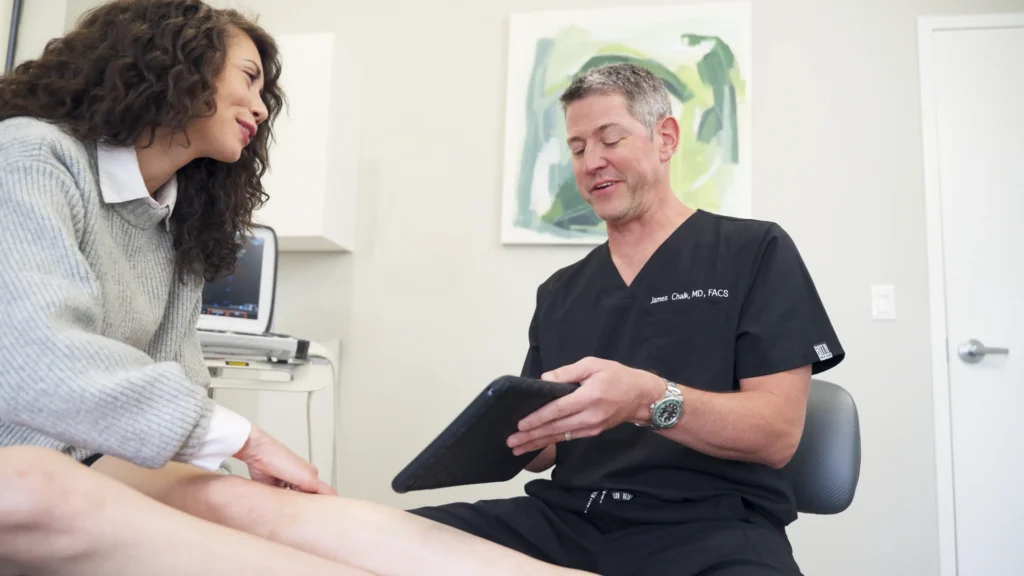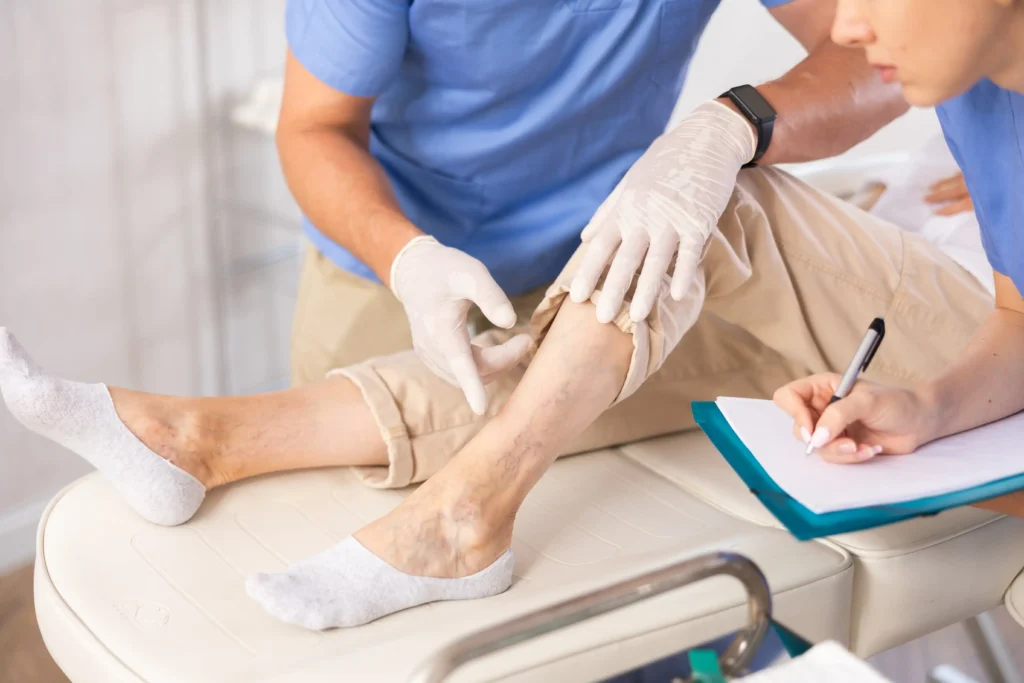Donald Trump’s chronic venous insufficiency: Experts explain the condition
Trump’s diagnosis brings attention to a common vein issue
When it was revealed that former President Donald Trump has been diagnosed with chronic venous insufficiency (CVI), it sparked a wave of questions. Some people were surprised. Others had never even heard of CVI.
As vein specialists, this news was a powerful reminder that CVI is more common than most people think, and many patients delay care until symptoms get worse.
If you’ve experienced leg swelling, heaviness, or visible veins, here’s what you should know.
What is chronic venous insufficiency?
Chronic venous insufficiency is a condition where the veins in your legs can’t push blood back up to your heart the way they should.
In healthy veins, small valves open and close to keep blood moving upward. But when those valves become weak or damaged, blood can leak backward and pool in the legs. This backward flow is called venous reflux. Over time, it puts pressure on your veins, causing swelling, pain, and varicose veins.
Think of your veins like plumbing. When the valves stop working, pressure builds and your legs take the hit.
If left untreated, CVI can lead to complications like skin discoloration, ulcers, or even blood clots such as deep vein thrombosis (DVT).
What causes CVI and who’s at risk?
CVI doesn’t develop overnight. It usually builds over time, especially if your veins are under a lot of pressure or your circulation is slow.
Common causes and risk factors
- Age (more common after 50)
- Family history of vein problems
- Extra weight or obesity
- Standing or sitting for long periods
- Pregnancy, especially multiple pregnancies
- Previous blood clots (DVT)
- Lack of physical activity
- Smoking, which damages blood vessels
While anyone can develop chronic venous insufficiency, the risk goes up when these factors overlap. It’s the same condition that Donald Trump was diagnosed with after noticing swelling in his legs, a common early sign of CVI.
The good news is that it’s treatable, especially when caught early.
Symptoms you shouldn’t ignore
The early signs of CVI can feel like everyday fatigue, which is why they’re easy to overlook. But your legs may be trying to tell you something.
- Swelling in the legs or ankles
- A feeling of heaviness, aching, or throbbing
- Bulging or twisted veins (varicose veins)
- Cramping or restless legs, especially at night
- Itching or burning near visible veins
- Skin changes like dryness or dark patches around the ankles
- Open sores or ulcers that don’t heal well
If you notice any of these symptoms regularly, don’t wait. A simple evaluation can give you answers.
Is CVI dangerous or contagious?
No. CVI is not contagious. It’s not caused by a virus or bacteria. You can’t catch it from another person. It’s a mechanical issue in how blood flows through your veins.
Can CVI be dangerous?
Yes, if left untreated. While CVI doesn’t shorten your life, it can lead to serious complications, including:
- Leg ulcers that heal slowly
- Skin infections
- Blood clots (DVT) that can travel to the lungs
What are the treatments for chronic venous insufficiency?
Thankfully, vein surgery is no longer the standard. Today, CVI is treated with minimally invasive procedures done right in the office.
Most treatments take less than an hour. You can walk out and return to your routine the same day or the next.
Common treatment options
Sclerotherapy: A quick injection to close smaller veins like spider veins.
Radiofrequency Ablation (RFA): Uses heat through a small catheter to close faulty veins.
Endovenous Laser Ablation (EVLA): Similar to RFA but uses laser energy to seal the vein.
VenaSeal: A medical adhesive (like glue) that seals the vein shut without using heat.
ClariVein: A rotating catheter that delivers medicine without heat or discomfort.
Varithena: A foam medication that collapses and treats large varicose veins.
All of these treatments are minimally invasive, done under local anesthesia, and designed for fast recovery.
When to see a vein specialist?
If your legs are swelling, aching, or feeling tired more often, and especially if you see bulging veins, don’t wait until your symptoms get worse. It’s time to talk to one of our board-certified vein specialists.
What is the best clinic to treat chronic venous insufficiency in the USA?
When it comes to treating chronic venous insufficiency (CVI), choosing the right clinic matters. You want a team that specializes in vein care, offers the latest minimally invasive treatments, and understands how to tailor care based on your symptoms, lifestyle, and risk factors.
At Veintreatment.com, our clinics across the U.S. are led by board-certified vein doctors who offer minimally invasive treatments and personalized care in modern, outpatient settings.








